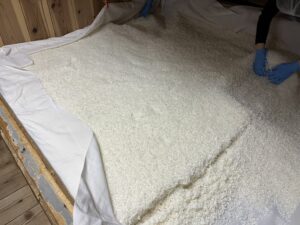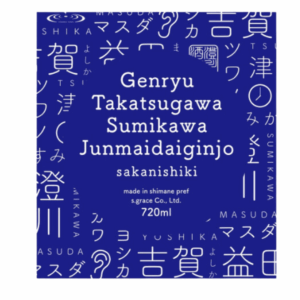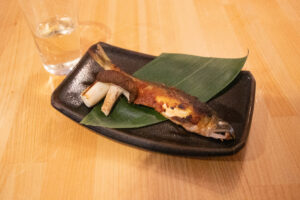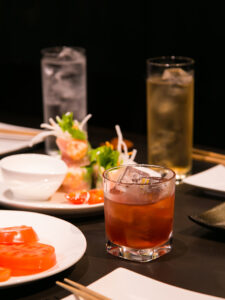What is the aroma of sake? – The “universe of aromas” that spreads within a single cup –

When we taste sake,
the first thing we notice is its “aroma.”
The aroma of sake varies greatly depending on the rice used as raw material, the yeast, the brewing method, and the aging process.
In fact, sake is a drink with a rich “world of aromas” that rivals that of wine and whiskey.
There are three main types of sake aromas
① Ginjo aroma
A fruity and elegant aroma commonly found in ginjo and daiginjo sake.
Representative scents include apple, banana, pear, and melon. These are derived from yeast-derived aromatic compounds such as “isoamyl acetate” and “ethyl caproate.”
s.grace’s “Genryu Takatsugawa Junmaidaiginjo Sumikawa” also has a mild ginjo aroma. This aroma is popular among women.
② Rice aroma (rich aroma)
A soft aroma derived from rice, particularly noticeable in junmai sake and honjozo sake.
It can also evoke the aroma of freshly cooked rice, chestnuts, nuts, and kinako (roasted soybean flour).
The aroma is subtle, making it easy to pair with food, and it is an excellent accompaniment to meals.
③ Aged aroma/Heat-treated aroma
Long-aged sake or sake that has undergone heat treatment (heat sterilization) may have an “aged aroma” reminiscent of caramel, dried fruit, or honey, or a smoky, grain-like aroma.
These aromas give sake a sense of “depth” and “complexity.”
Balancing aroma and drinking style
For sake with a vibrant aroma, it is best to chill it and drink it in a wine glass to enhance the aroma.
On the other hand, for sake with a mild aroma and strong rice flavor, it is recommended to enjoy the harmony of taste and aroma at room temperature or slightly warmed.
For example, s.grace’s blueberry liqueur has a red wine-like aroma and tannins, making it a great match with cheese and meat dishes. The way you drink it is key to bringing out its unique aroma.
The “impression of aroma” makes it perfect for gifts
Aroma is also a key factor in first impressions.
The aroma that rises when you pour it into a glass captures the drinker’s heart.
When choosing a gift,
it’s recommended to consider whether you want a “fruity and vibrant aroma”
or a “calm aroma that complements a meal.”
Summary ~Aroma is the story of sake~
Before taking a sip, please take a moment to appreciate the aroma.
That aroma tells the story of which yeast was used, what kind of rice was selected, and at what temperature it was fermented—
it is a small story filled with the brewer’s dedication.
At s.grace, we value the unique aromas of each sake,
and deliver beverages that are suitable for gifts or for your own special moment.







